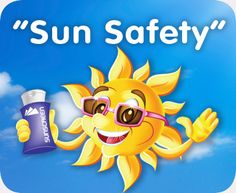
Soaking up some summer sun?? Make sure you lather up with sunscreen! Those summer rays may feel sensational, but the effects of sun exposure can be detrimental over time. According to the American Academy of Dermatology (AAD), 1 in 5 Americans will develop some form of skin cancer during their lifetime. Ultraviolet exposure can also lead to cataracts, wrinkles and age spots. It is important to protect yourself properly, even on cloudy days. The sun can penetrate light clouds, mist and fog. The sun radiates light to the earth, and part of that light consists of invisible UV rays. When these rays reach the skin, they cause tanning, burning, and other skin damage.
Sunlight contains three types of ultraviolet rays: UVA, UVB, and UVC:
- UVArays cause skin aging and wrinkling and contribute to skin cancer, such as melanoma. Because UVA rays pass effortlessly through the ozone layer (the protective layer of atmosphere, or shield, surrounding the earth), they make up the majority of our sun exposure.
Beware of tanning beds because they use UVA rays as well as UVB rays. A UVA tan does not help protect the skin from further sun damage; it just produces color and a false sense of safety.
- UVBrays are also dangerous, causing sunburns, cataracts (clouding of the eye lens), and effects on the immune system. They also contribute to skin cancer. Melanoma, the most dangerous form of skin cancer, is thought to be associated with severe UVB sunburns that occur before the age of 20. Most UVB rays are absorbed by the ozone layer, but enough of these rays pass through to cause serious damage.
- UVCrays are the most dangerous, but fortunately, these rays are blocked by the ozone layer and don’t reach the earth.
What’s important is to protect your family from exposure to UVA and UVB, the rays that cause skin damage.
Beat the Heat – Follow these guidelines to help protect your skin:
- Seek shade during the sunniest parts of the day (usually from 10:00am to 2:00pm)
- Cover Up – Block the rays with a cover up and hat.
- Use Sunscreen Consistently – Apply sunscreen generously — dermatologists recommend using 1ounce (enough to fill a shot glass) to cover the exposed areas of the body.
Reapply sunscreen often, about every 2 hours. Reapply after a child has been sweating or swimming.

